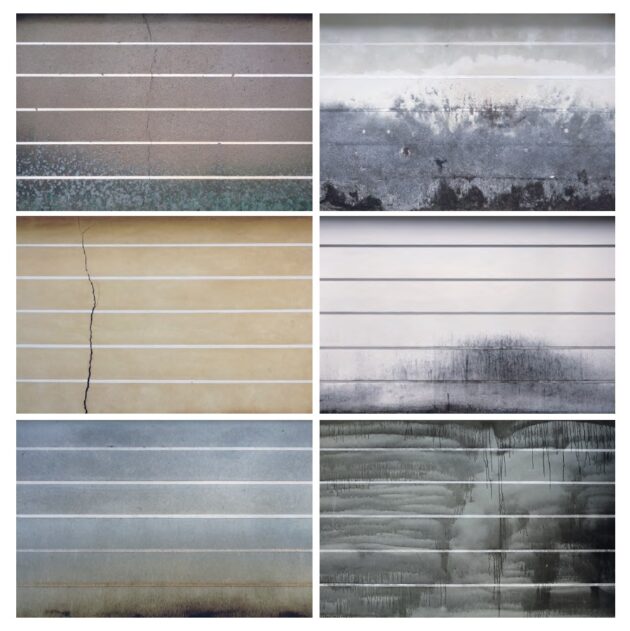

Horizontal lines on an earthen wall. Found on the outer walls of temples, some shrines, and the Imperial Palace, these lines indicate close historical ties to the Imperial family. Some temples have three or four lines, but the walls of monzeki jiin, where members of the Imperial family have served, are decorated with five.
Throughout the city of Kyoto, these lines are so ubiquitous as to go unnoticed by visitors and residents alike. For me, they have a mysterious beauty. Amidst all the classic scenes of Kyoto, I have found myself photographing these simple walls again and again. They are images which were literally painted by the weather. Time and rain and summers and winters have collaborated with the sakan craftsmen to create these abstract motifs, which, like karesansui rock gardens, can begin to resemble natural forms: mountains receding into the distance or forests enshrouded in rain, perhaps misty seas or cloudscapes.
My fascination lies in the tension between the elegant, mathematical perfection of the lines themselves and the creeping patina of time and nature. This visual juxtaposition of permanence and ephemerality is a profound and beautiful truth at the heart of the aesthetic philosophy which developed in Kyoto.



‘White Lines’ appeared in KJ 100 (100 Views of Kyoto).
Lane Diko is currently holding an exhibition of images from this series at Ace Hotel in conjunction with the 2024 Kyotographie KG+ photography festival. April 11-May 12.
KJ Associate Editor, he guest-edited KJ 106 (Cultural Fluidity) and is working on a follow-up issue (KJ 108).



